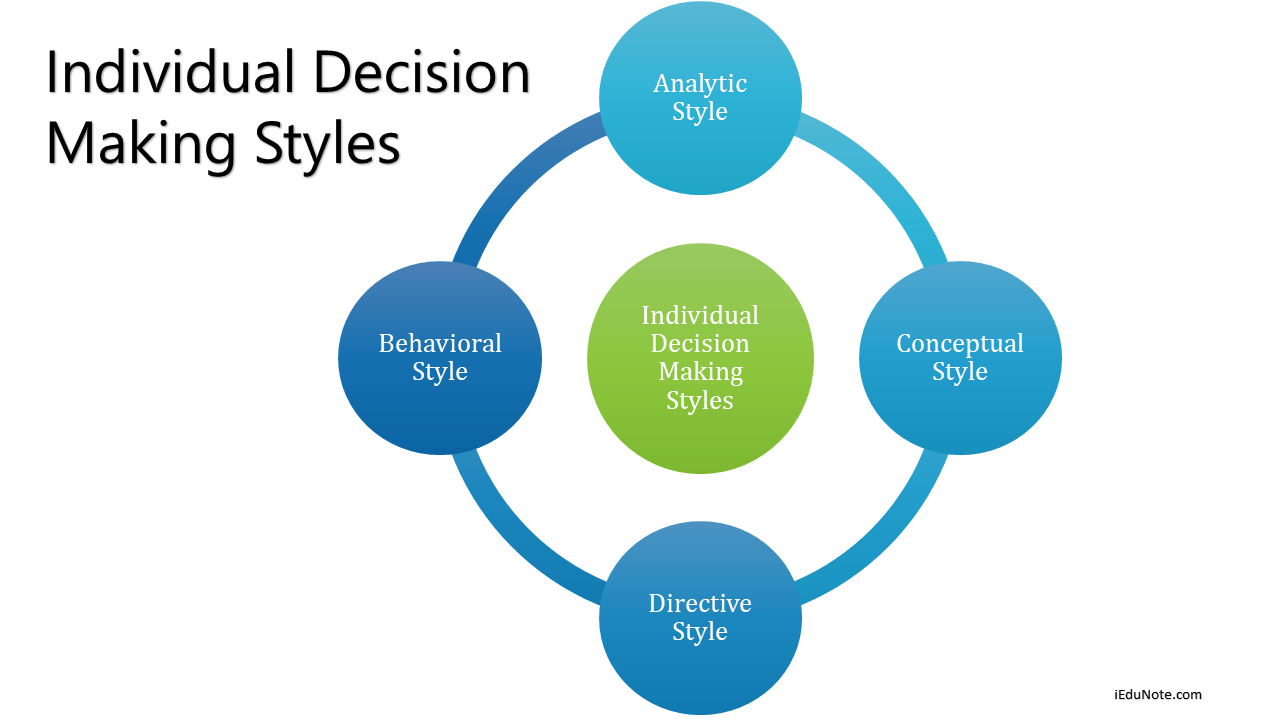In a practical situation, a person is different from others. That’s why different people use different decision-making styles in the organization.
There are two reasons for the differences between decision-making styles. The first is the way of thinking.
Some people are logical and rational. They process information serially. In contrast, some people are intuitive and creative. They perceive things as a whole. The other reason addresses a person’s tolerance for ambiguity.
Some people have a high need to structure information in ways that minimize ambiguity, while others can process many thoughts at the same time. Research on decision styles has identified four different individual approaches to making decisions.

These are; individual decision-making styles are 4 types; analytic style, conceptual style, directive style, and behavioral style.
- Analytic Style.
- Conceptual Style.
- Directive Style, and
- Behavioral Style.
The analytic style has a much higher tolerance for ambiguity than do directive decision-makers. Analytic managers would be best characterized as careful decision-makers with the ability to adapt to or cope with novel and unexpected situations.
Individuals with conceptual styles tend to use data from multiple sources and consider many alternatives. Their focus is on taking long-run decisions, and they are very good at finding creative solutions to problems.
People using a directive style have a low tolerance for ambiguity and seek rationality. They are efficient and logical, but their efficiency concerns result in decisions made with minimal information and with few alternatives assessed.
Directive style makes decisions fast, and they focus on the short run.
Lastly, behavioral style characterizes decision-makers who have a strong concern for the people in the organization and their development. They are concerned with the well-being of their subordinates and usually receive suggestions from others.
Although these four decision-making styles are different, most managers have the characteristics to fall into more than one. It is probably best to think in terms of the manager’s dominant style and his or her backup styles.
Some managers rely almost exclusively on their dominant style; however, more flexible managers can make shifts ‘depending on the situation.